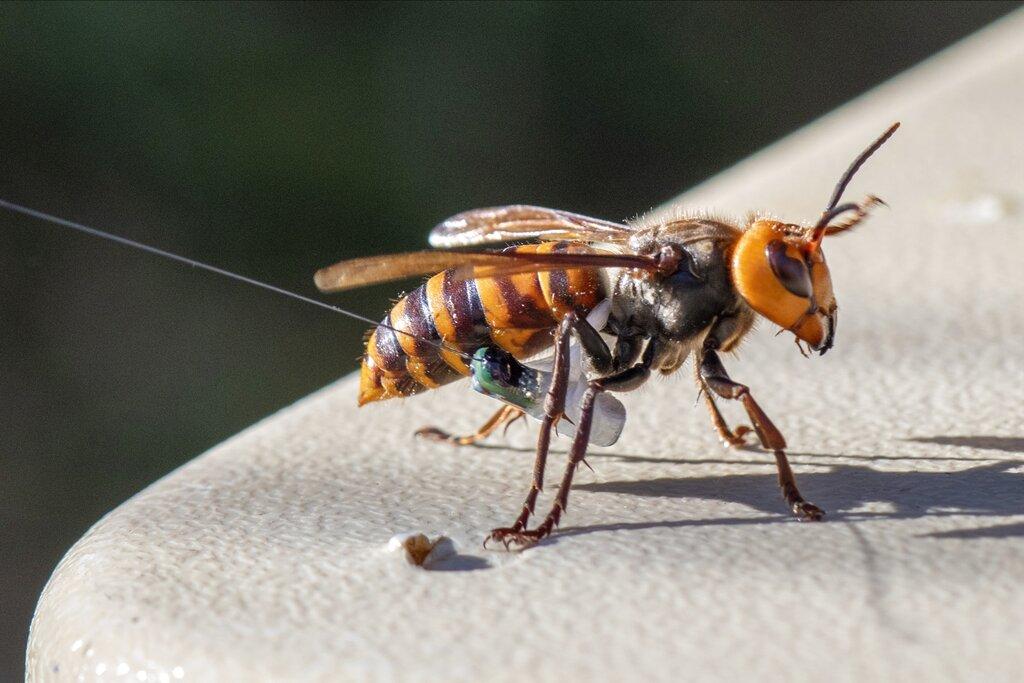Trends
All You Need To Know About ‘Murder Hornet’
Its sting is painful for humans, but it poses a greater harm to honeybees. Murder hornet isn’t known to harm people or pets.

What is a ‘Murder Hornet’?
The term “murder hornet” is a misrepresentation for the Asian gigantic hornet, the world’s largest hornet species. They are Asian in origin, as the name implies. However, they have since been discovered in Washington State. In December 2019, scientists confirmed their presence near Blaine, Washington. Sightings are expected to continue at least until 2021.
These hornets aren’t known to harm people or pets, despite their moniker. Honeybee “murders” are the only “murders” they’re likely to conduct.
What does a Murder Hornet look like?
It can grow up to 2 inches long, which is exceptionally enormous for a hornet. This is five times the size of a honeybee.
It has a huge, solid orange or yellow head with black eyes that are teardrop shaped. The thorax (middle section) is dark, and in adults, it tapers in at the waist to meet the abdomen (bottom section).
Bands of orange or yellow alternate with bands of black or brown on the abdomen.
Other bugs resemble the murder hornet, although they are all much smaller. The smaller heads, lighter colored thoraxes, and round eyes separate larger lookalikes like the western cicada killer and the eastern cicada killer. Their abdominal bands also appear to be distinct.
What is the greatest danger posed by Murder Hornets?
The primary threat is to the bee population, which pollinates many of our food crops. This is especially true of bees that live in hives and produce honey, which are known as “social” bees.
When worker hornets need to provide food for developing young, the hornets attack in late summer and early fall. They assault the hive, kill the adult bees, leave their remains at the bottom of the hive, and carry developing bees back to their nests for nourishment in the form of larvae and pupae.
What About Murder Hornet Stings?
Humans are rarely attacked by murder hornets. They will, however, sting to defend their nest or to keep you away from a beehive they have infiltrated. If this happens, their stings may be more painful than those of other insects due to their bigger size. This is due to a number of factors:
The stinger of this wasp is longer than the stinger of other wasps.
A sting can deliver a significant amount of venom and cause tissue damage.
It could be more painful than other stings.
Asian gigantic hornets, like other wasps and hornets, can sting many times. Though a swarm of hornets attacking a human is extremely rare, it does happen. And if it does happen, it can be very serious.
Clothing worn by beekeepers frequently fails to protect them from stings. The stinger of a murder hornet is so long that it can pierce protective clothing.
People who are allergic to wasp or bee stings should avoid them.
What Are Your Options for Self-Defense?
You probably haven’t got much to be concerned about. Only a few confirmed sightings of murder hornets have been reported in the United States, and they’ve all been in Washington State.
Even so, if you notice them, it’s preferable to avoid them. If you come across one, back up carefully and gently. It might sting you if you swat at it.
If a hornet or hornets enter your vehicle, come to a complete stop as gently and calmly as possible. If you’re in a safe area, open all the windows and get out of the car.
To make it less likely that you will be drawn to them in the first place:
- Avoid perfumes, colognes, and grooming products with a strong scent.
- When you’re outside, keep your food and drink covered.
- Garbage, food, dog feces, and fruit from trees or your garden should all be removed from your living areas.
- Wasp guards can be used to keep wasps away from hummingbird feeders.
When You’re Stung, What Should You Do?
- Soap and water should be used to completely clean the area.
- Apply ice to the sting to stop the poison from spreading.
- If you get many stings or an allergic reaction, see a doctor right once.
- To relieve itching and swelling, use an antihistamine pill or ointment.
If a person has been stung and has any of the following symptoms, call 911 immediately.
- Dizziness or lightheadedness
- Shortness of breath or difficulty breathing Difficulty swallowing or tightness in the throat
- The skin has a blue tint to it.
- Swelling in the mouth or on the face
